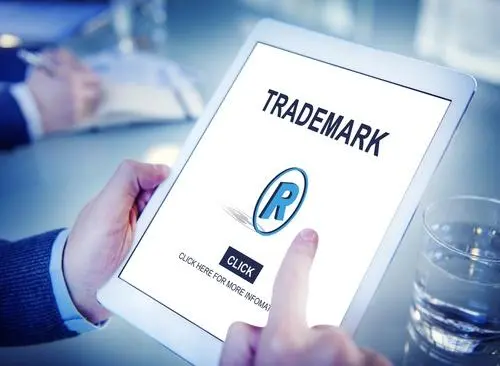Employment confidentiality and non disclosure agreement: how-to guide
Ready to start your business? Plans start at $0 + filing fees.
Excellent


by Page Grossman
Page is a writer and strategist. In her spare time, she writes romantasy and fosters adorable, old cats. You can find...
Contents
Updated on: March 13, 2024 · 12min read
- What is a non disclosure agreement?
- Overview
- Types of non disclosure agreements
- How to draft an effective non disclosure agreement
- Employment confidentiality and non disclosure agreement instructions
- Do's & don’ts checklist
- Review what you need to know about non disclosure agreements
In a world where collaboration is key and trust is both a commodity and a currency, protecting confidential information is crucial to the success of your business. A properly prepared non disclosure agreement can protect your business.
This article will help you navigate the labyrinth of legal jargon and strategic secrecy so you can protect your confidential information, keep sensitive information private, and maintain trade secrets. Non disclosure agreements are the safeguard to innovation and the key to collaborative confidence.
What is a non disclosure agreement?
A non disclosure agreement, also known as an NDA, confidentiality agreement, or proprietary information agreement, is a legally enforceable contract between a person who has confidential information and a person who will gain access to that information.
The non disclosure protects a business’s trade secrets, proprietary information, and sensitive information. Once signed, the confidential information cannot be discussed with any unauthorized party without legal repercussions.
A non disclosure agreement is between two or more parties who wish to form a business relationship. This can be between a business and independent contractors or between two businesses.
Once a non disclosure agreement is signed, it creates a confidential relationship. If the person receiving access to the proprietary information shares or discloses that information, they will be in breach of the agreement. There are legal consequences for breaking a non disclosure agreement and for sharing confidential information.
Overview
Almost all businesses have confidential and private information, from product plans and customer lists to software and blueprints. In many cases, disclosure of such confidential information could seriously damage a company, particularly if that information falls into the hands of competitors. Moreover, in our technological world, data can span the entire globe within hours (if not minutes).
A comprehensive employee confidentiality non disclosure agreement is thus critical to protecting your information, giving notice to all of your staff members that they have a serious and ongoing duty of confidentiality to the company.
The simple act of stating the importance of protecting such information can be valuable. A confidentiality agreement signed at the start of an employment relationship alerts a prospective employee that your company considers this a tremendously important matter. By signing the agreement, the employee acknowledges that the disclosure of confidential information is a breach of their employment contract, a fact that has serious and wide-ranging consequences. Moreover, the agreement’s existence allows the parties to enter into an open discussion about company business. Questions can and should be answered before employment, and parties should have the opportunity to discuss those questions with full information on both sides.
A company has little to lose and much to gain by using confidentiality agreements. Below, you'll find a detailed example of the different sections that should be included in every non disclosure agreement. You can also find a sample that can be customized to your needs below.
Types of non disclosure agreements
A non disclosure agreement is a legally enforceable document. The provisions laid out in the agreement will depend on where the issuing company is incorporated and which state law will be used to enforce it legally.
It’s important to have a local lawyer review your non disclosure agreement to ensure it abides by the laws of your state.
Mutual vs. non-mutual NDAs
There are two types of NDAs: mutual and non-mutual.
A mutual non disclosure agreement is between two parties, both of which will be disclosing private company information to the other. Both sides agree not to share the sensitive information they learn about the other company.
A non-mutual non disclosure agreement is between two parties, one of which is the disclosing party and the other the receiving party. The shared confidential information flows one way, from one business to another business or contractor. Since only one party receives sensitive information, they are the only party bound to confidentiality. A non-mutual NDA is also sometimes referred to as a unilateral NDA.
Specific industry considerations
Each industry will include different confidential information in their non disclosure agreements.
For example:
- Technology companies may be focused on protecting intellectual property that offers them a competitive advantage
- Healthcare companies will need to protect private patient information
- Businesses in many sectors will need to protect financial information
- Entertainment businesses will need to protect creative works they’ve produced prior to release
How to draft an effective non disclosure agreement
If you need to draft a non disclosure agreement for your company, it can seem intimidating to figure out where to start. An NDA agreement is a legally binding document, meaning it must follow specific legal standards in order to be enforceable.
To get started, we recommend following these steps:
- Look for a sample non disclosure agreement
- Tailor that document to your specific situation and industry
- Have a local legal counsel review your NDA to ensure you’ve met all of the requirements
- Common pitfalls to avoid
To make sure your sensitive information remains confidential, there are a few common pitfalls you should avoid when putting together your non disclosure agreement.
- Ambiguous language: A legal contract should be clear and concise. Ambiguous or unclear language will cause confusion and make the contract harder to enforce.
- Overly broad language: The definition of confidential and proprietary information must be narrow enough to be enforced. It’s not enough to say all information is considered confidential, you must be specific for the contract to be legally enforceable.
- Reasonableness: All contracts must be considered reasonable to be legal. It would be unreasonable and unenforceable to claim common knowledge as a trade secret.
Employment confidentiality and non disclosure agreement instructions
The following provision-by-provision instructions will help you understand the terms of your employment confidentiality and non disclosure agreement. The numbers and letters below (e.g., Section 1(a), Section 2(d), etc.) correspond to provisions in the agreement. Please review the entire agreement before starting the step-by-step process.
Introduction of parties
Identifies the parties (i.e., the company and the employee). Notice the phrase “For good consideration.” Simply put, for an agreement to be enforceable, each party must benefit from it (in the agreement, this is called “consideration”). In this agreement, the employer “gets” the employee’s promise not to disclose secrets, and the employee ”gets” employment (or continuing employment) from the company. It is best if the agreement is signed prior to the commencement of employment. If that’s not possible, the agreement should be signed in conjunction with a raise, bonus, or promotion.
Section 1: Confidential information
Review this section very closely to ensure that it provides sufficient security for your company and its proprietary information.
Section 1(a): Company information
This is the “meat” of the agreement, explaining not only what the company’s confidential information is but also the employee’s duty not to disclose that information.
Section 1(b): Exceptions
These are listed exceptions to the general rules of non disclosure. This section details three situations in which an employee’s disclosure of “confidential information” does not violate the agreement. First, if the “confidential information” has already been made public by someone other than the employee. Second, if the “confidential information” had been provided to the employee in a non-confidential manner previously. In other words, the information was provided to the employee before he or she signed the agreement, during which time the information either was not considered confidential or was provided in a manner suggesting it was not confidential. Third, if the employee is legally compelled to provide confidential information. If this is the case, however, the employee must alert the employer immediately so that it may limit potential damage.
Section 1(c): Former employment information
Keeping information confidential is important for all companies, and you must guard against the misuse of another company’s protected information. If an employee uses a former employer’s confidential information in the course of their work for you, your business could be tainted by this association. This former employment provision reminds incoming employees of both their new obligations to you and their continuing obligations to their former employers.
Section 1(d): Third-party information
Informs the employee that third-party confidential information (in other words, not that of the company, but information learned in the course of employment with the company) is also protected under the agreement.
Section 2: Return of property
This is an extremely important provision, and although it may seem obvious to you that company property should be returned after an employee’s termination, it may not be as obvious to your employees. It is thus essential to communicate your return policy in the agreement (and reiterate it in your employee handbook, exit materials, and severance agreements), stating specifically that employees must return all company property before leaving your employ.
Section 3: Notification of future employer
As noted above, even after an employment relationship has ended, an employee may have continuing obligations to a former employer. Their duty to protect proprietary information does not conclude at the end of their employment. This provision makes clear that the company can inform an employee’s future employers about these continuing duties.
Section 4: Legal and equitable remedies
Because of the nature of the damages it would suffer if its trade secrets were released, this provision allows the company to seek equitable relief (i.e., court remedies requiring a party to perform or refrain from performing certain acts) to prevent an employee or other party from distributing additional information. For example, if a former employee of Coke distributed the “secret formula,” it would strike a serious blow against Coke and its business. In all likelihood, Coke would seek both damages and an injunction barring further distribution of their protected information.
Section 5: Successors and assigns
In the life of a company, there may be mergers, acquisitions, or sales of business divisions. On such occasions, the company may assign its agreement to a surviving entity or affiliate without obtaining the employee’s consent. Simply put, if the company is purchased, the new company will not need to renegotiate this agreement: it will continue to be effective as is.
Section 6: Continuing obligations
This provision reminds the employee that after termination, he or she must maintain the confidentiality of protected information and return any company documents.
Section 7: Severability
Protects the terms of the agreement as a whole, even if one part is later invalidated. For example, if a state law is passed prohibiting notification of future employers, it will not undo the entire agreement. Instead, only the section dealing with notification would be invalidated, leaving the remainder of the agreement enforceable.
Section 8: Counterparts/electronic signatures
The title of this provision sounds complicated, but it is simple to explain: essentially, it says that even if the parties sign the agreement in different locations, or use electronic devices to transmit signatures, all of the separate pieces will be considered part of the same agreement. In a modern world where signing parties are often not in the same city—much less in the same room—this provision ensures that business can be transacted efficiently without sacrificing the validity of the agreement as a whole.
Section 9: Governing law
Employees may work in one state and their employer in another. A governing law provision allows the employer to choose the state laws that will be used to interpret the agreement. Note that this is not a venue provision: the included language will not impact where a potential claim can be brought. Please write the applicable state in the blank provided.
A company that uses the tools provided in this package can foster a work environment that stresses employee obligations and duties about confidentiality. This knowledge and awareness can limit careless disclosures and protect your business. The greater the employee’s understanding of the consequences of a breach, the more seriously they will take their duties and obligations. If your confidential information is disclosed, you will have taken a large step towards defending your company and providing the documentation needed to protect your business.
Do's & don’ts checklist
Creating an employee confidentiality agreement is the first of many steps in establishing a healthy, professional, and dispute-free workplace. The following tips will provide additional guidance about protecting your company and its employees:
- Allow applicants ample time to review and sign the confidentiality agreement, preferably a few days. This will reduce the likelihood, or at least the efficacy, of a claim that the applicant did not understand the agreement’s terms.
- Sign two copies of the agreement, one for you and one for the employee.
- Employment agreements, including confidentiality agreements, should be signed before an employee starts working. However, if the employee has been with the company for some time, a confidentiality agreement should be signed in conjunction with a raise, bonus, or promotion.
- A confidentiality agreement should be kept in the employee’s file, together with other important personnel documents (including employment agreements, invention assignments, progress reports, and disciplinary actions).
- It is important to remind employees that the materials they are handling are proprietary and confidential. Months after signing a confidentiality agreement, its warnings and instructions may be far from their thoughts. As a part of your workplace’s “best practices,” instruct your human resources department to hold annual meetings to review important employee policies, including those governing confidentiality. Make and file a list of meeting attendees. In addition, when your company distributes copies of confidential information, write the word “CONFIDENTIAL” in bold letters on the face of the documents.
- Nothing lasts forever, and this is certainly true of employment. At the end of an employment relationship, your company should conduct an exit interview. At this meeting, the employee should be reminded of their continuing obligations to the company, including maintaining the confidentiality of information beyond the termination of the employment period.
- Review the employment confidentiality agreement carefully. One size does not fit all.
Review what you need to know about non disclosure agreements
Non disclosure agreements are one of the best ways to protect your company’s confidential information and to build business relationships that are built on trust and respect. A non disclosure agreement gives you the peace of mind that the other person intends to protect your business’s sensitive information. And, if they don’t, there will be repercussions for their actions.
While non disclosure agreements might seem intimidating at first, the premise is quite simple. It’s a legally enforceable agreement where two parties share and protect private information, agreeing not to share that information with unauthorized parties.
If you need a non disclosure agreement for your business and don’t have your own legal counsel, you can start by using a non disclosure agreement template and then customizing it for your own needs.
You may also like
 Trademarks
TrademarksWhy do I need to conduct a trademark search?
By knowing what other trademarks are out there, you will understand if there is room for the mark that you want to protect. It is better to find out early, so you can find a mark that will be easier to protect.
October 4, 2023 · 4min read
 Last Wills
Last WillsHow to write a will: A comprehensive guide to will writing
Writing a will is one of the most important things you can do for yourself and for your loved ones, and it can be done in just minutes. Are you ready to get started?
February 9, 2024 · 11min read
 Starting Your LLC
Starting Your LLCHow to start an LLC in 7 steps: A complete guide for 2024
It's easy to create a new LLC by filing paperwork with the state. But to set yourself up for success, you'll also need to think about your business name, finances, an operating agreement, and licenses and permits. Here's a step-by-step guide.
March 21, 2024 · 20min read